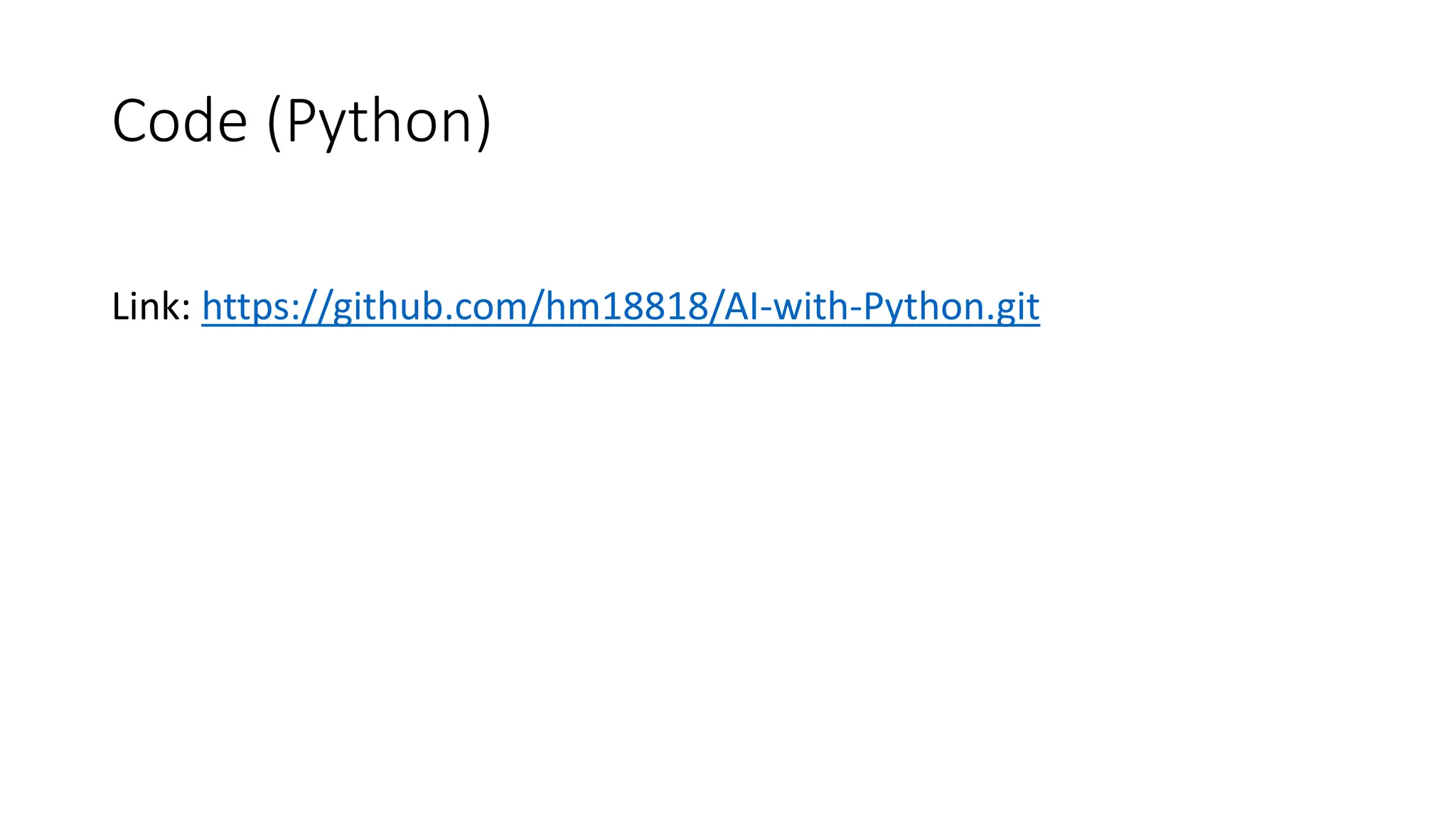The document outlines an assignment on implementing breadth-first search (BFS) and depth-first search (DFS) algorithms to solve a maze problem, identifying the shortest path and exploring all possible paths. It details the concepts of state space, start state, goal state, and provides a pseudocode for the BFS algorithm along with a step-by-step maze solution example. The final output of the BFS solution shows a path from the start node 'a' to the end node 'n', with a total cost of 13 nodes explored.

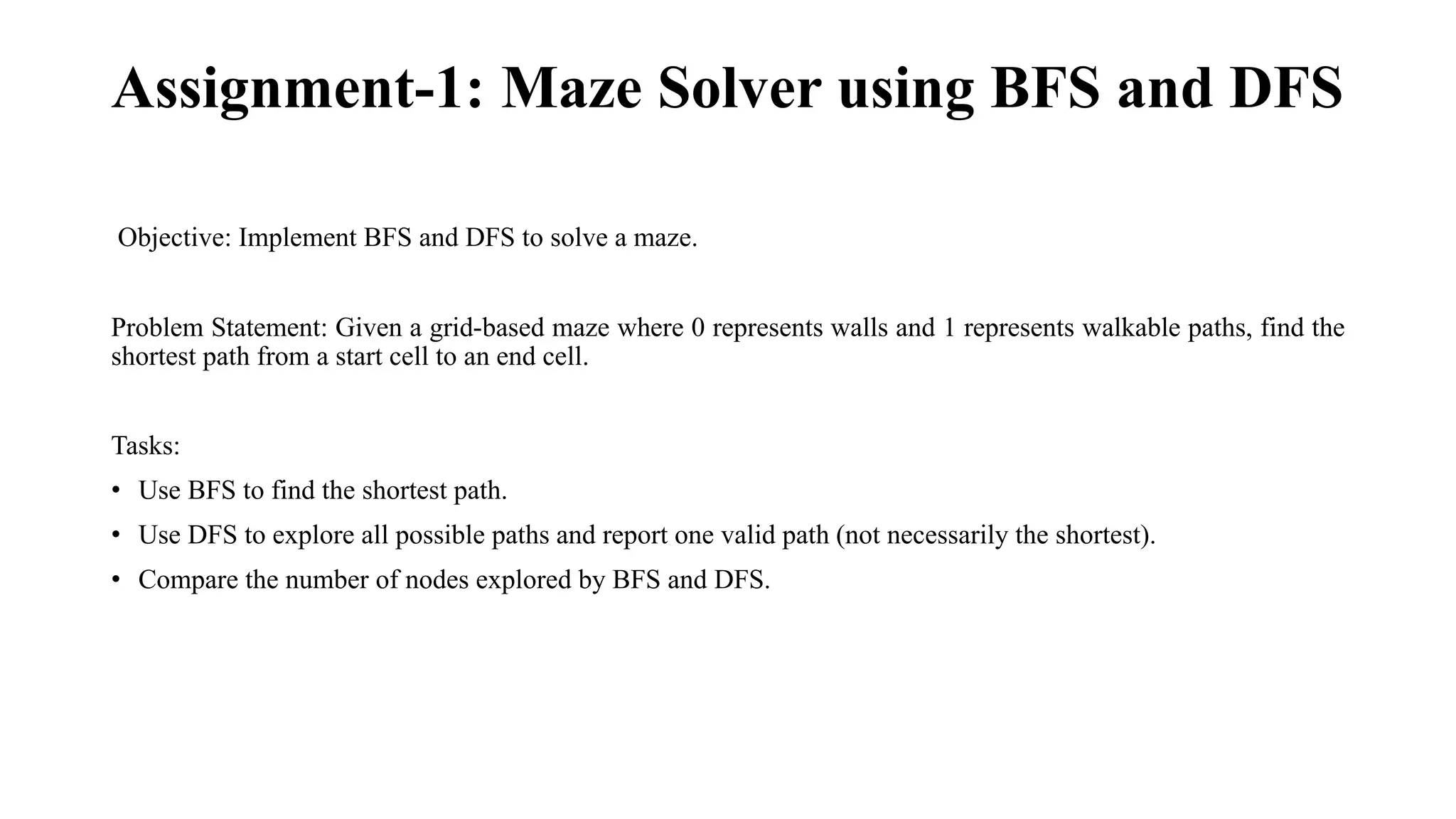
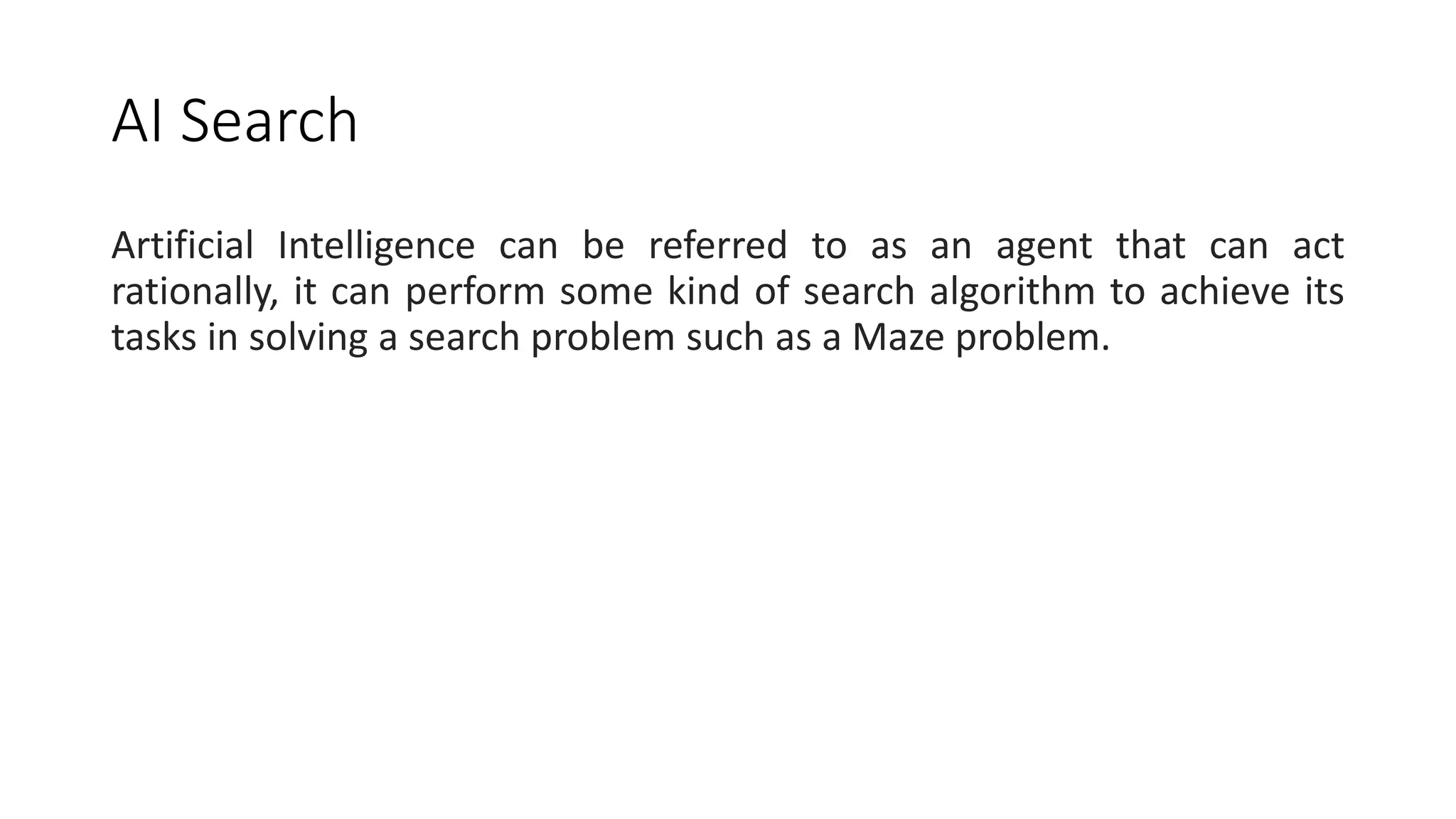
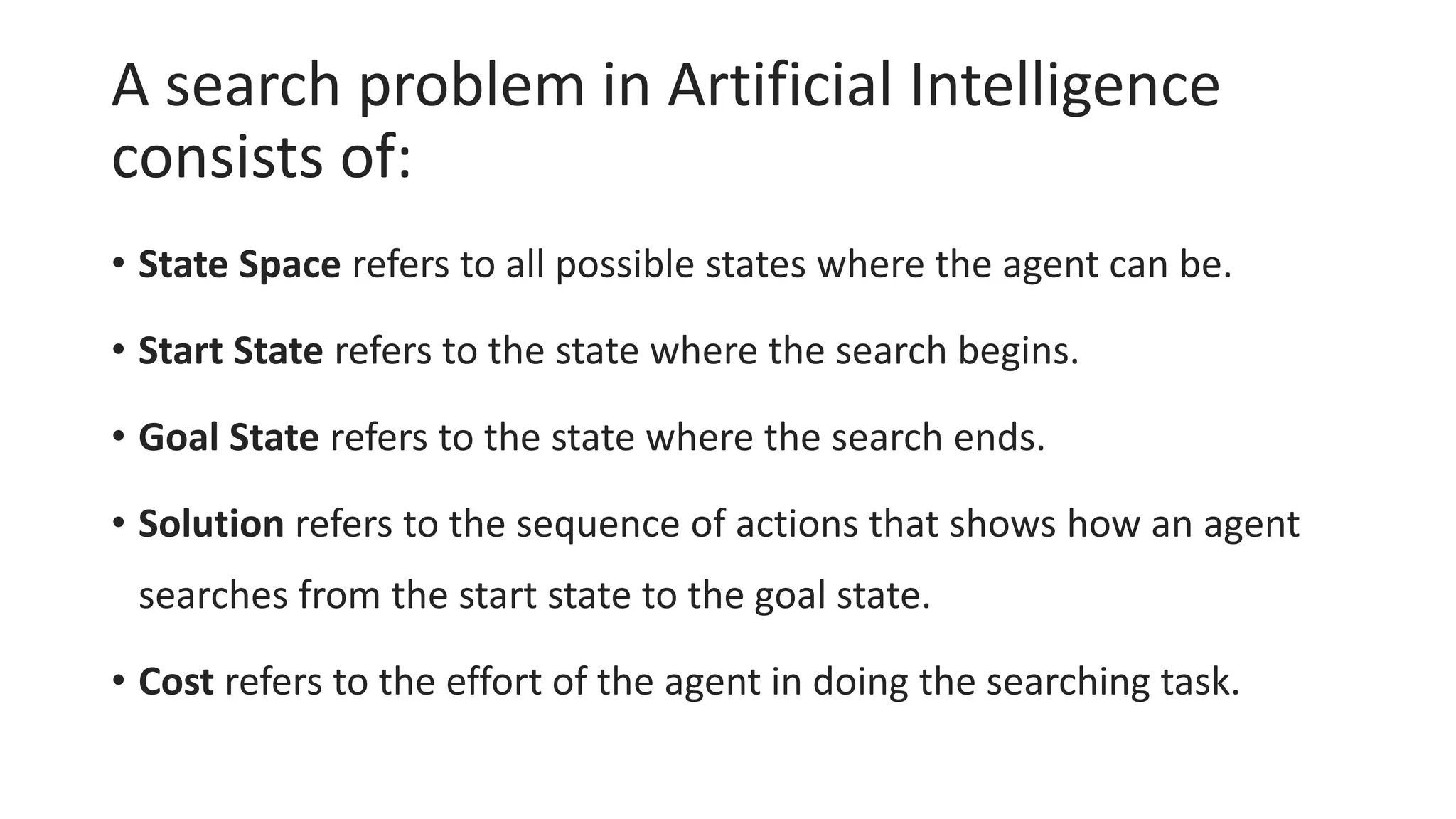
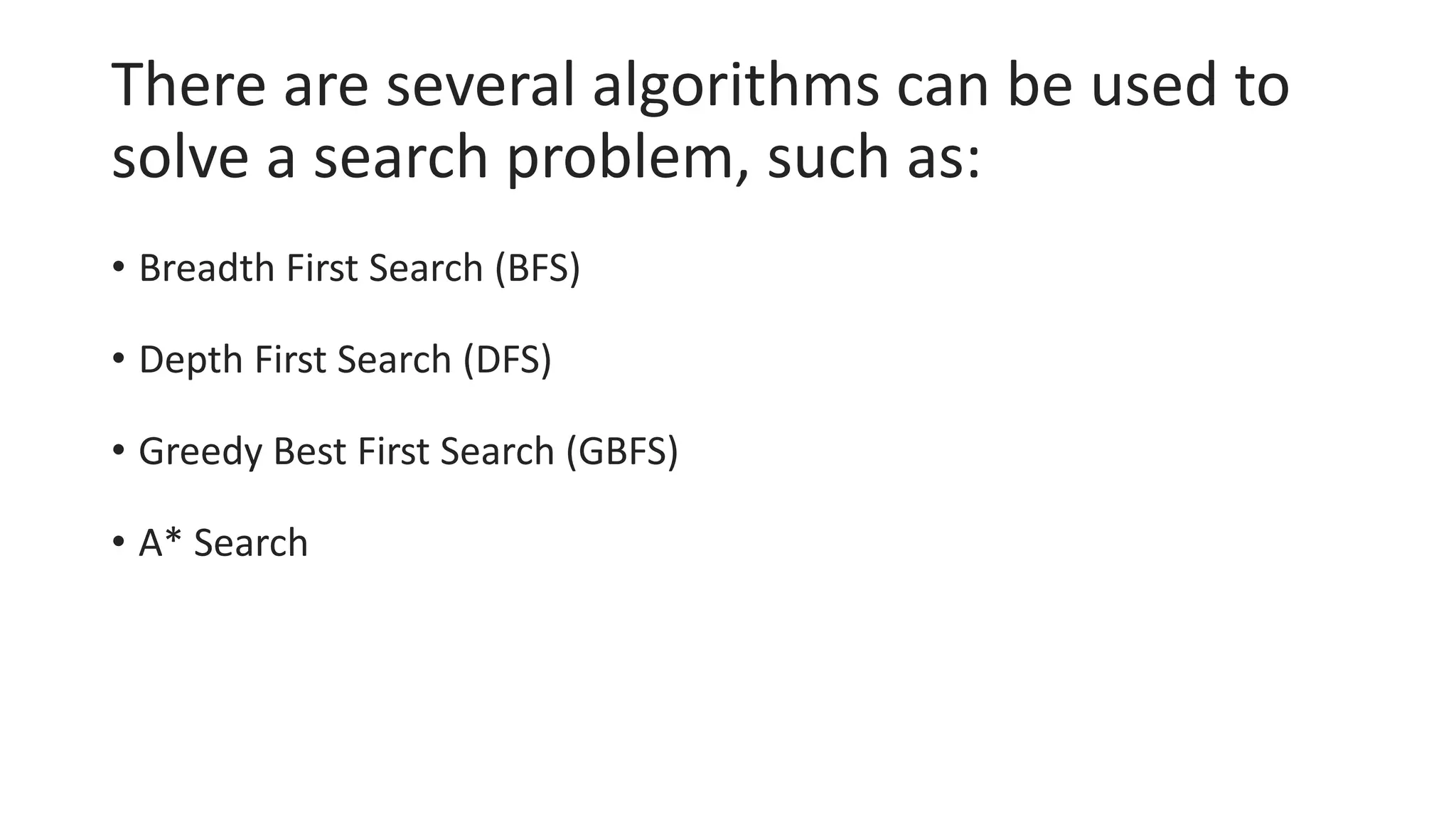
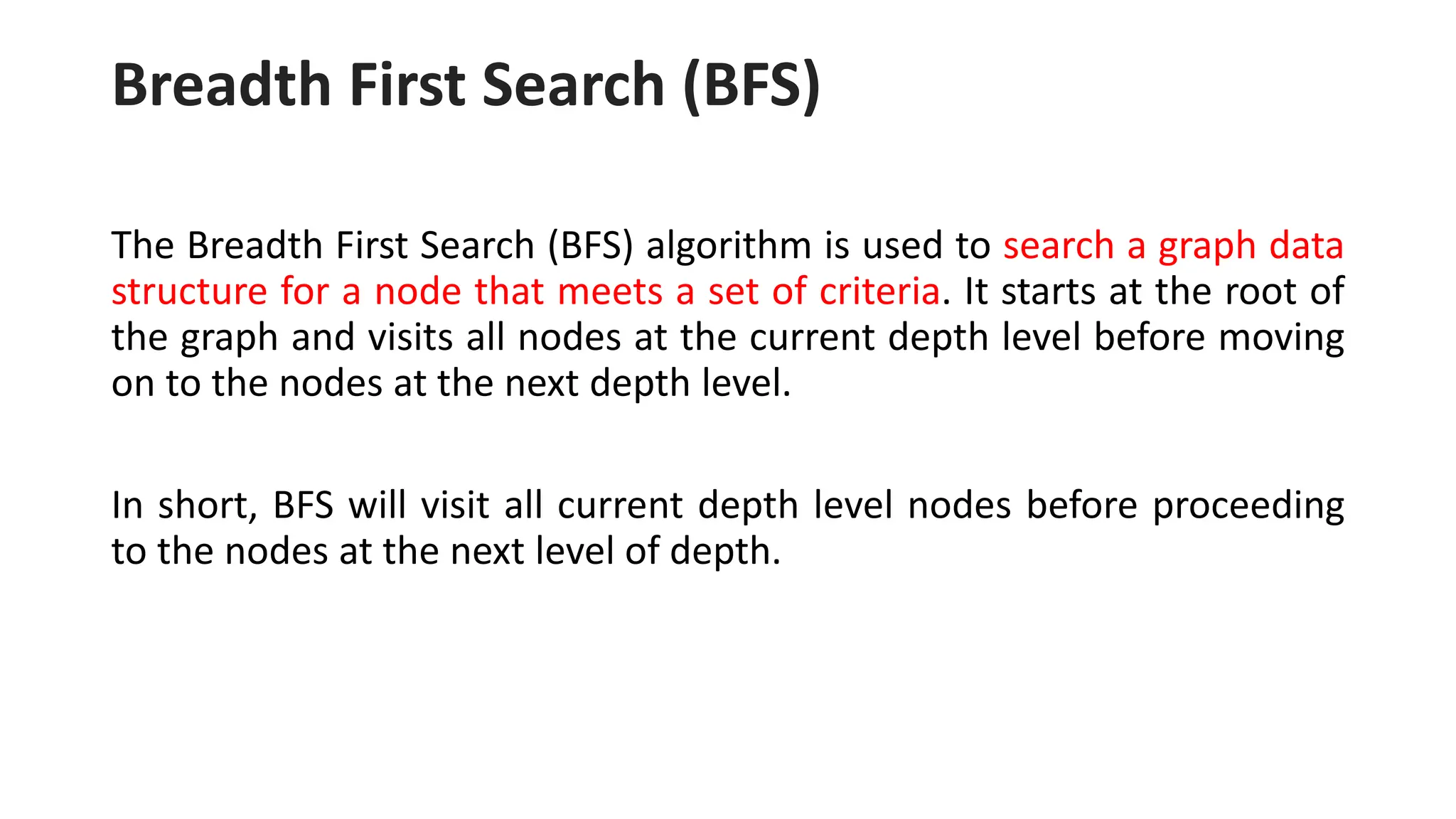
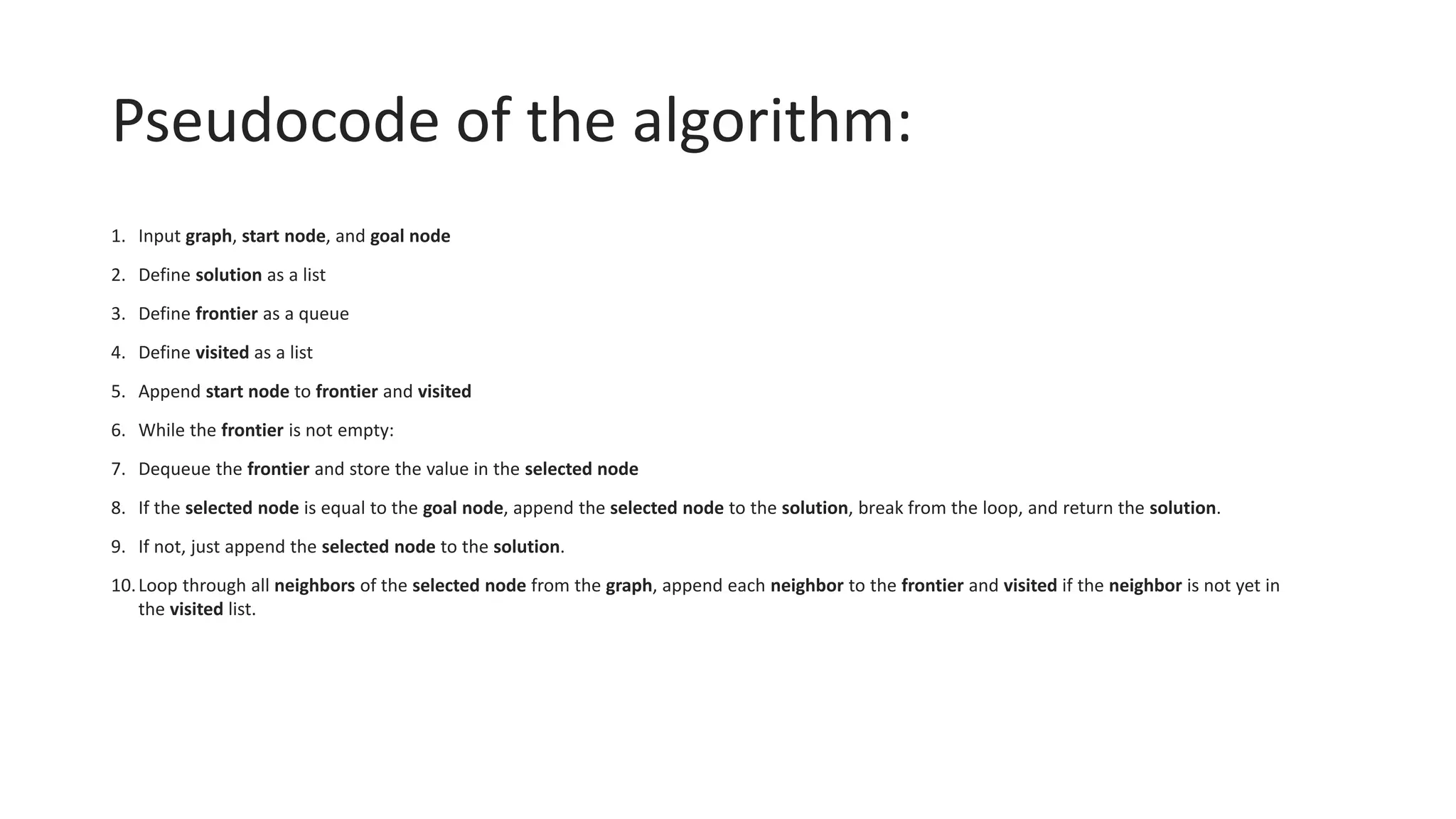
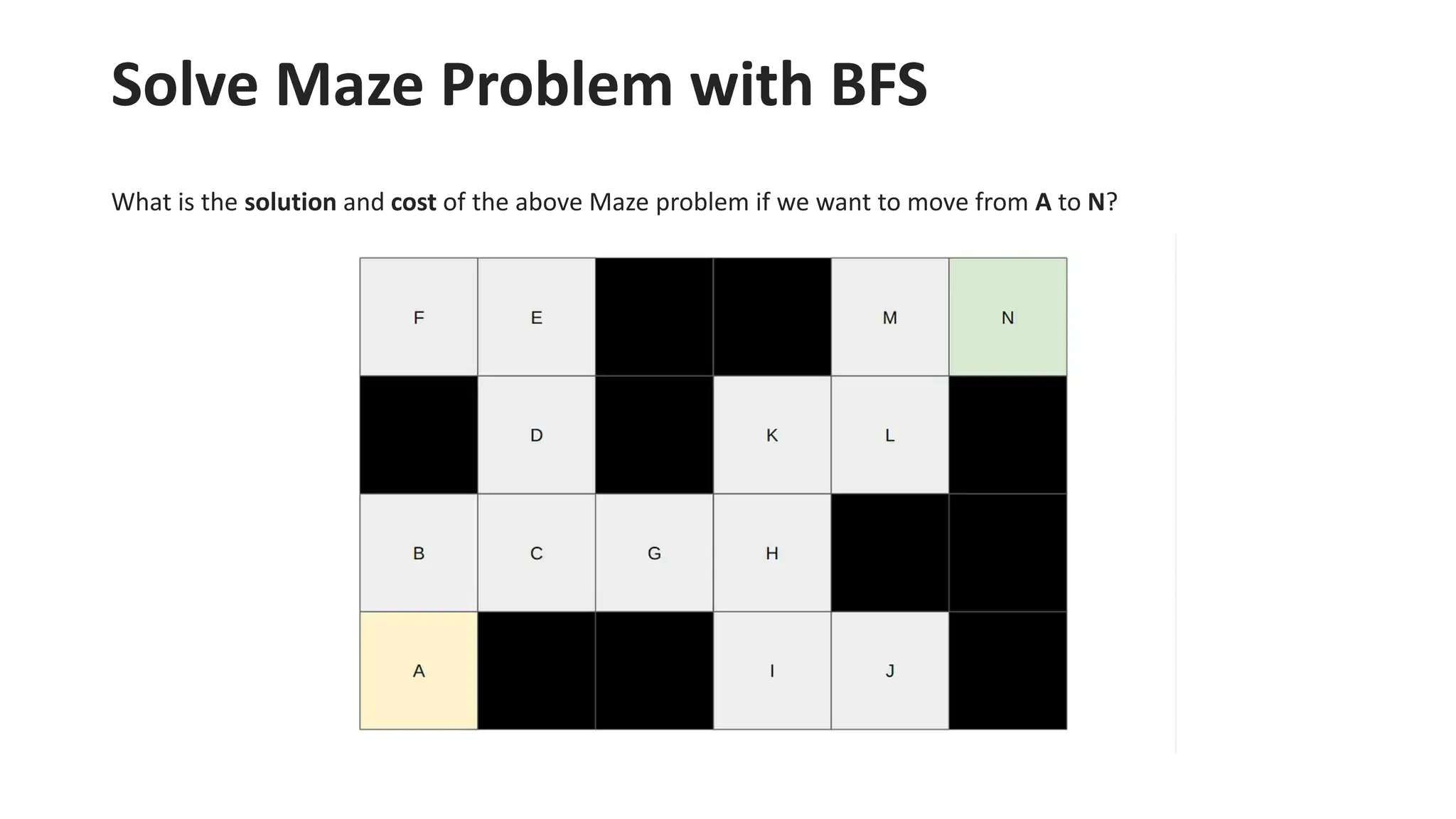
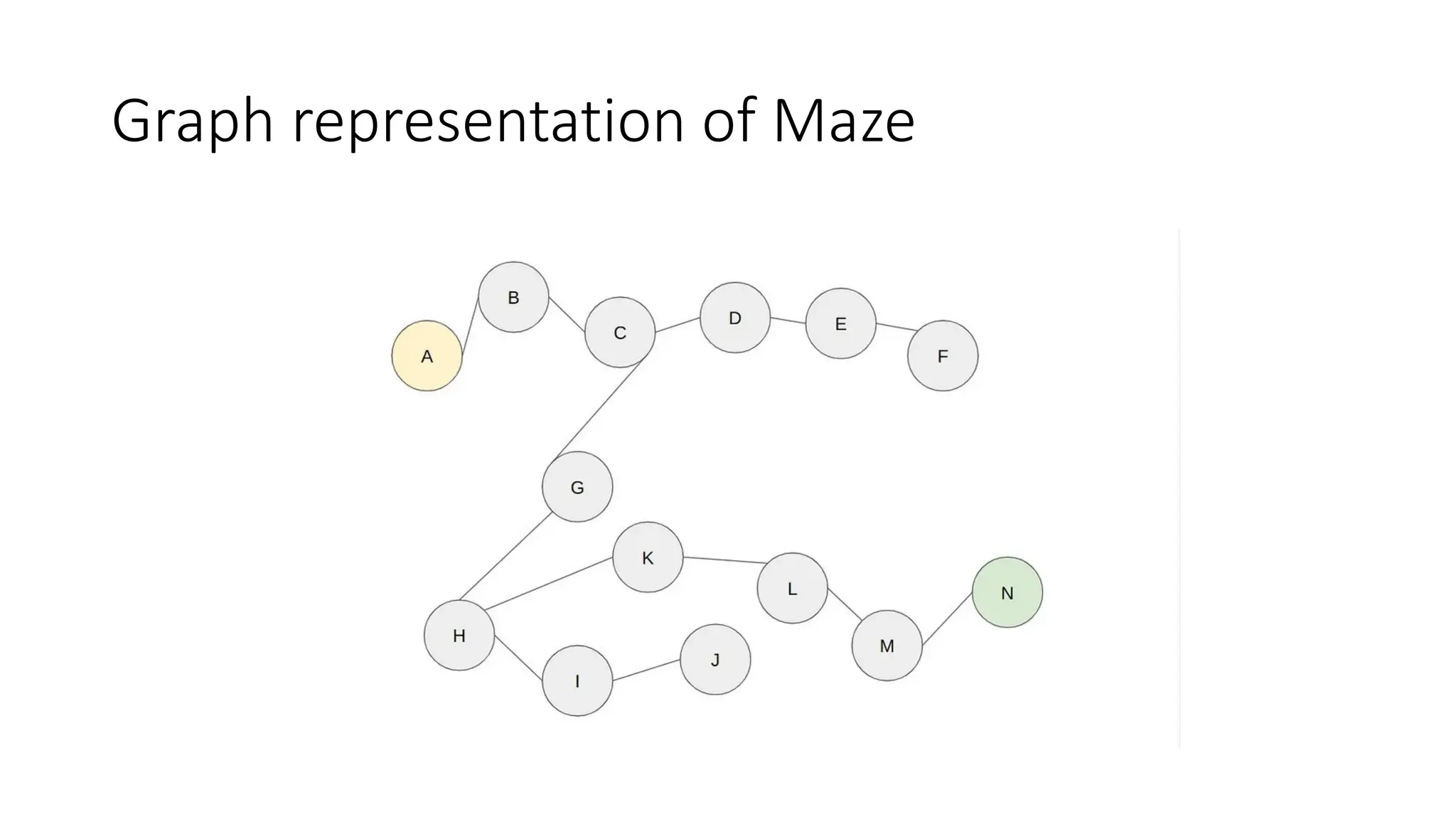
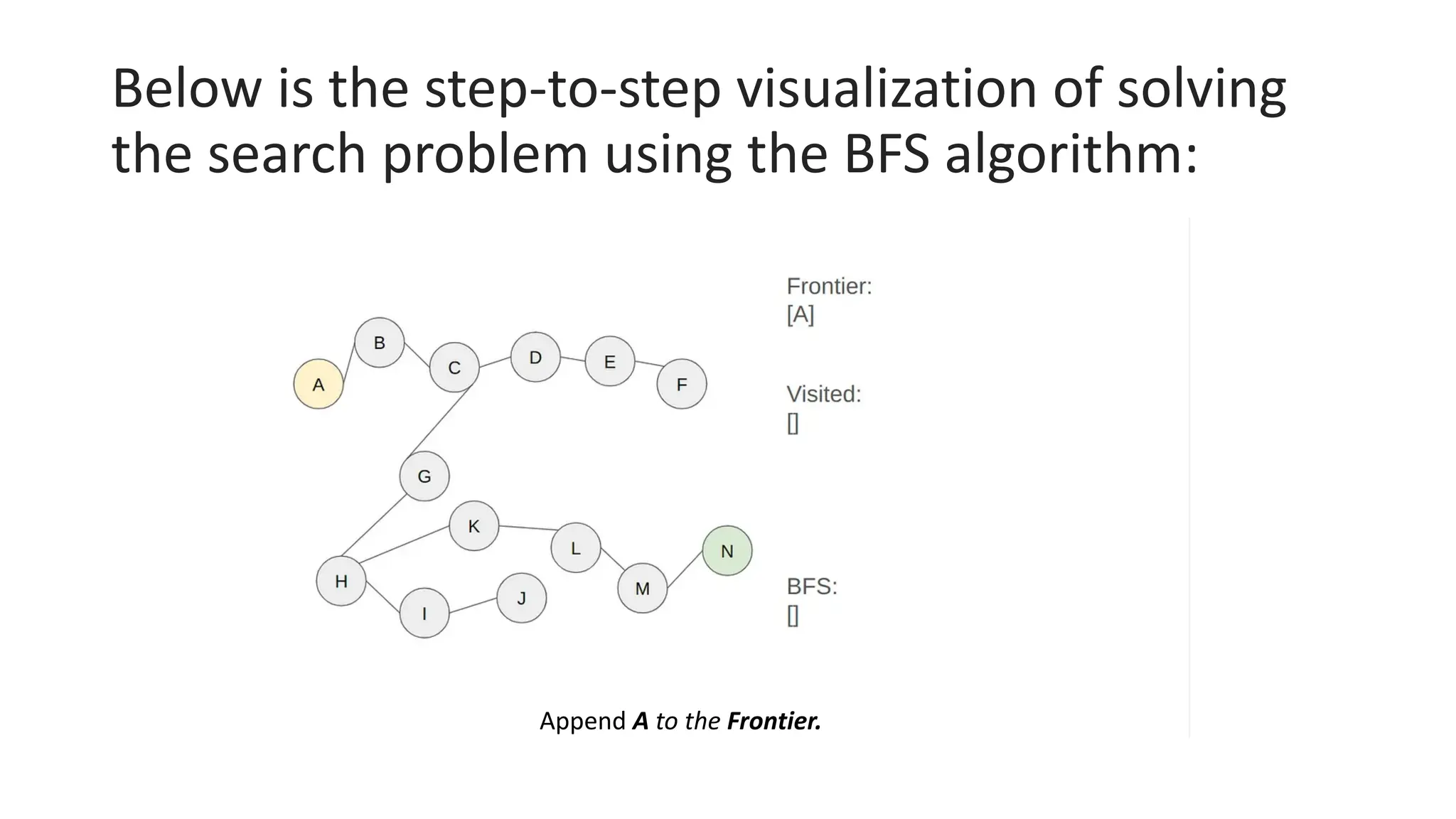
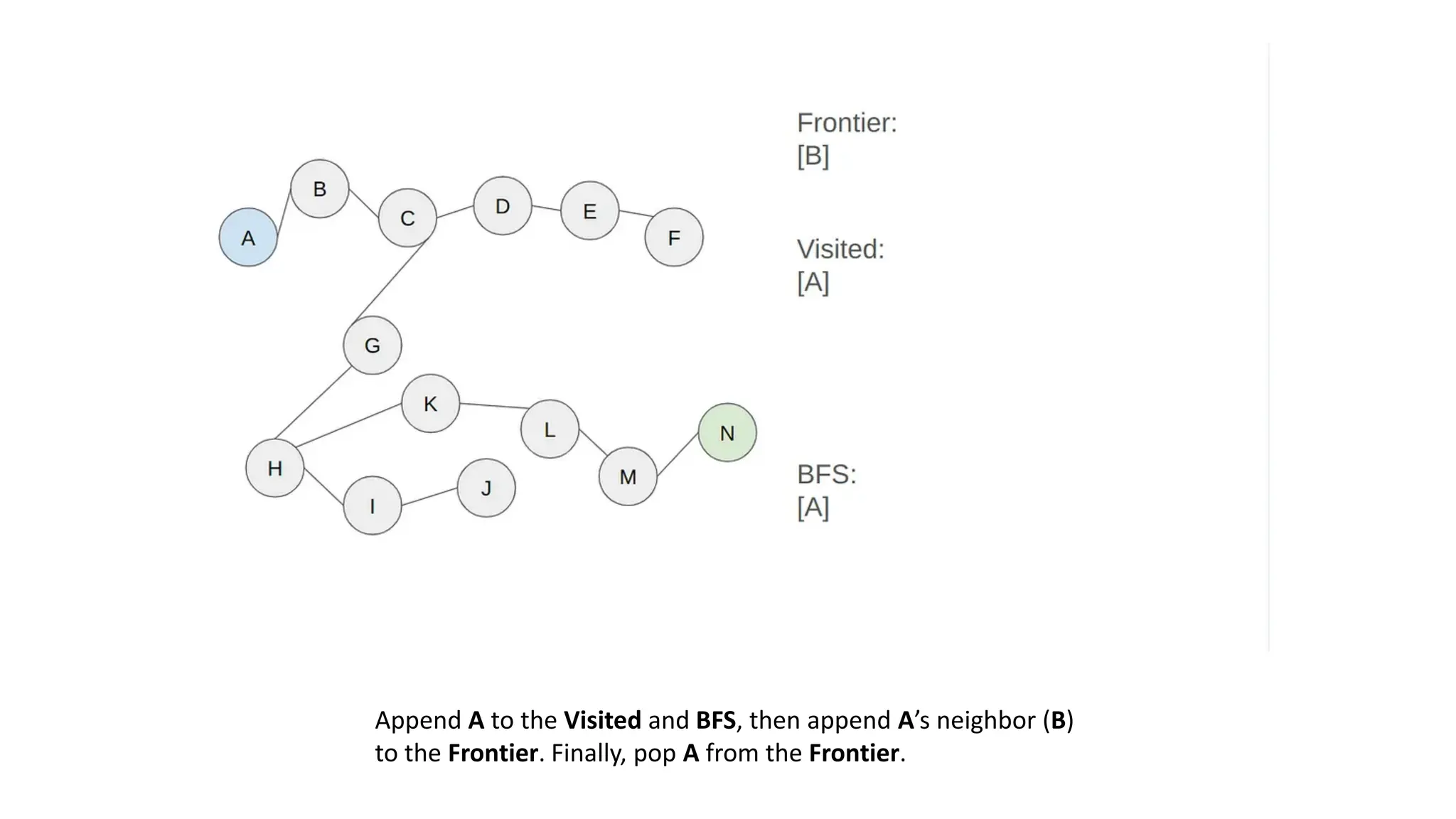
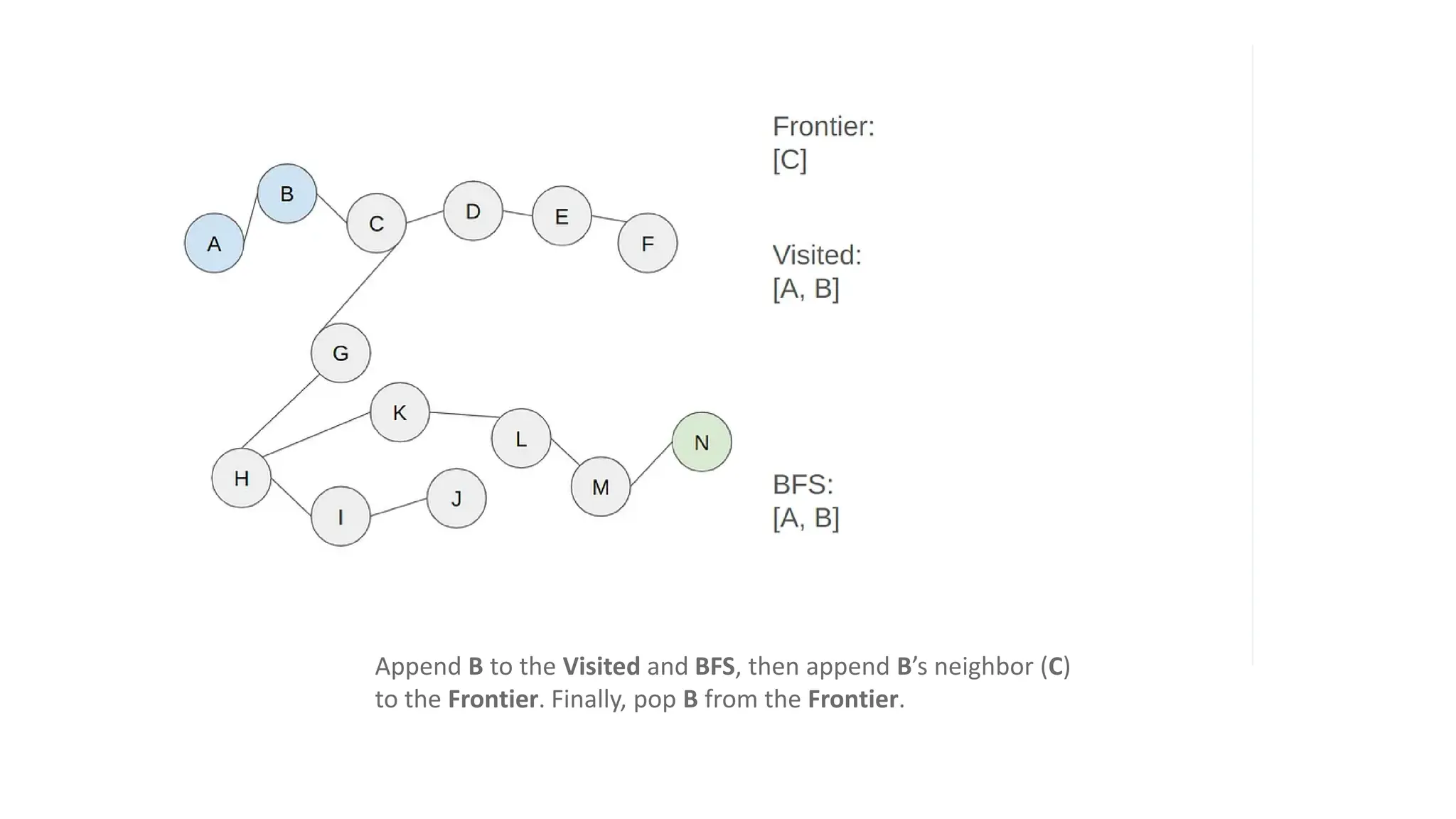
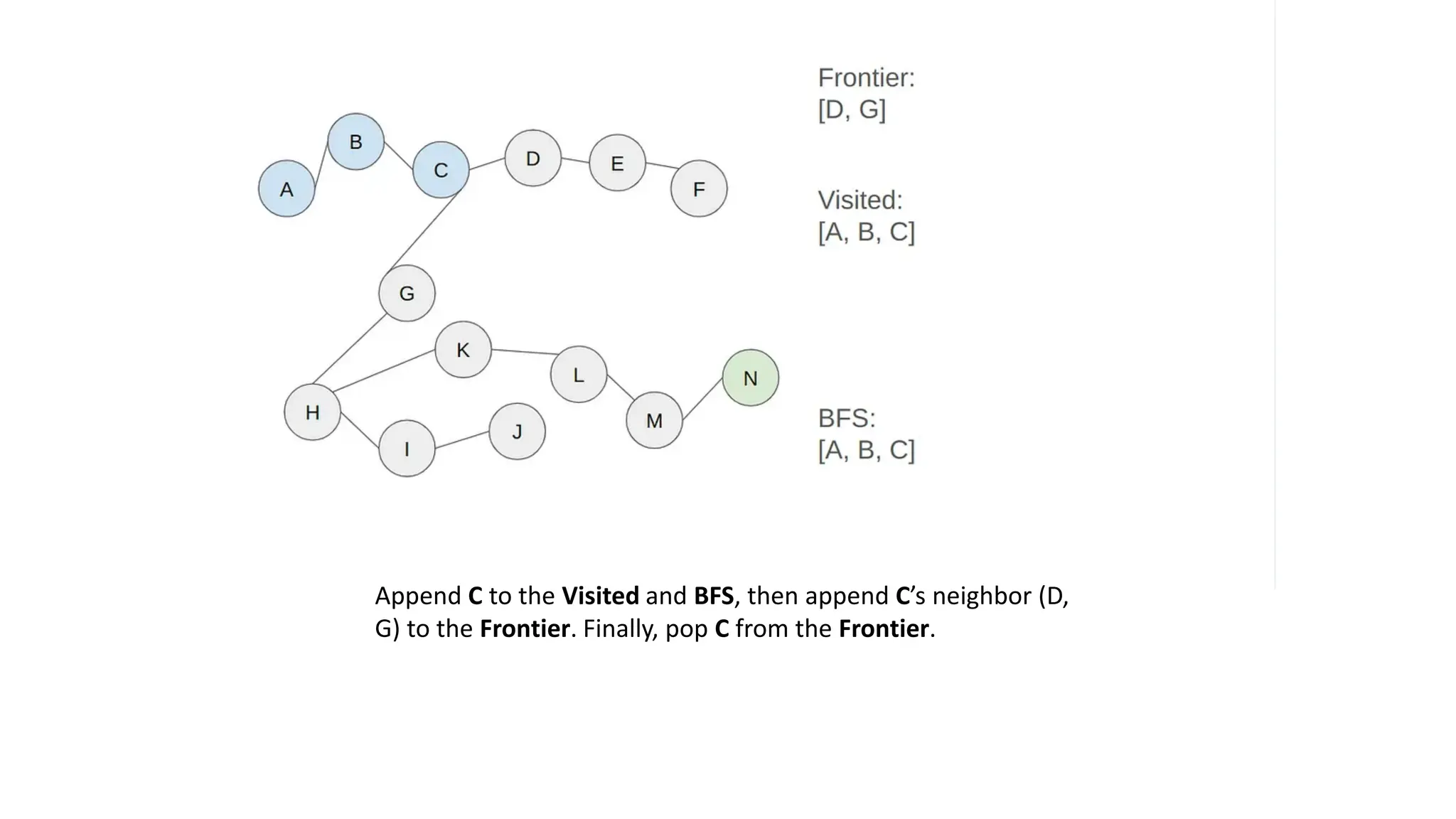
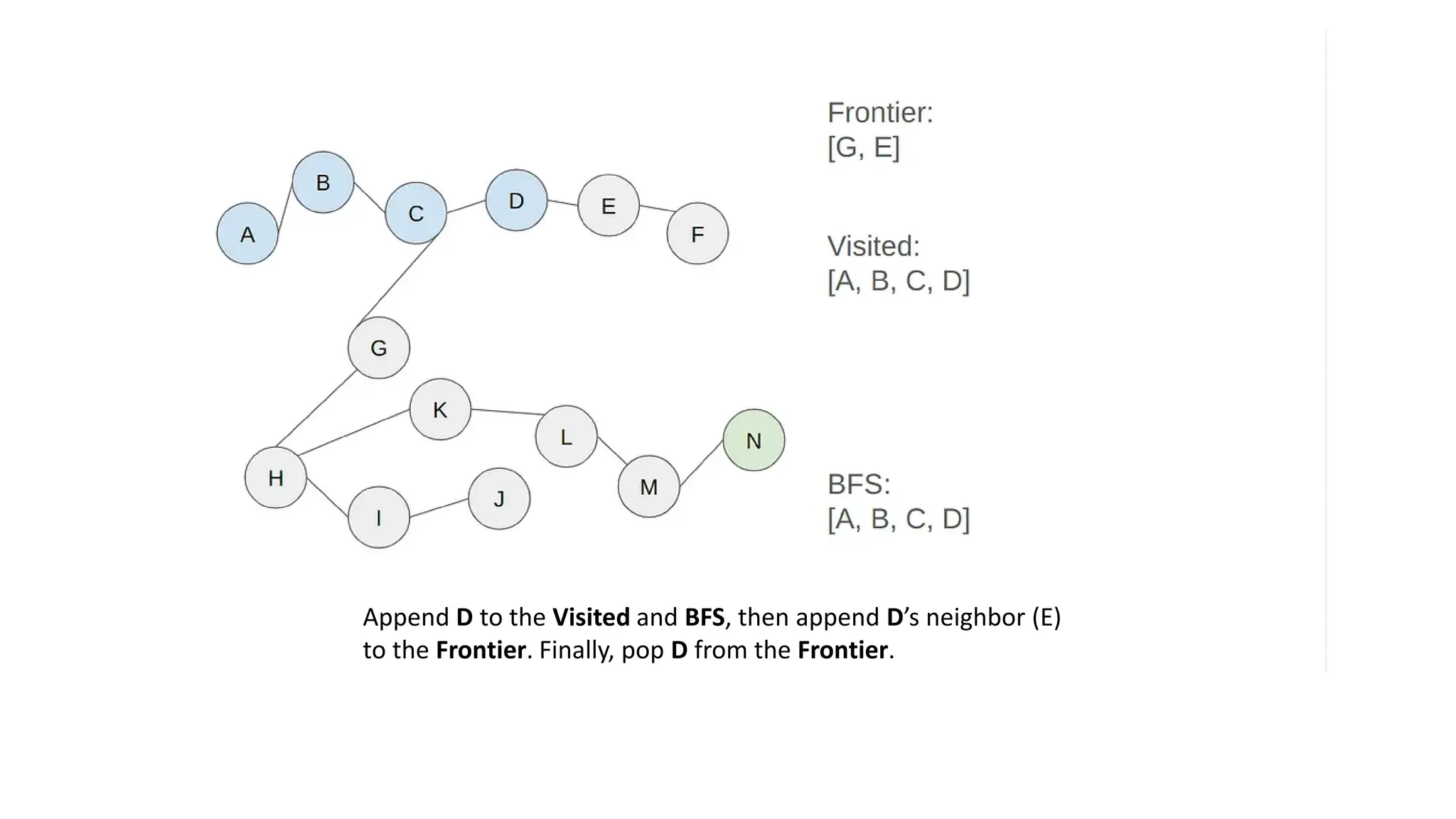
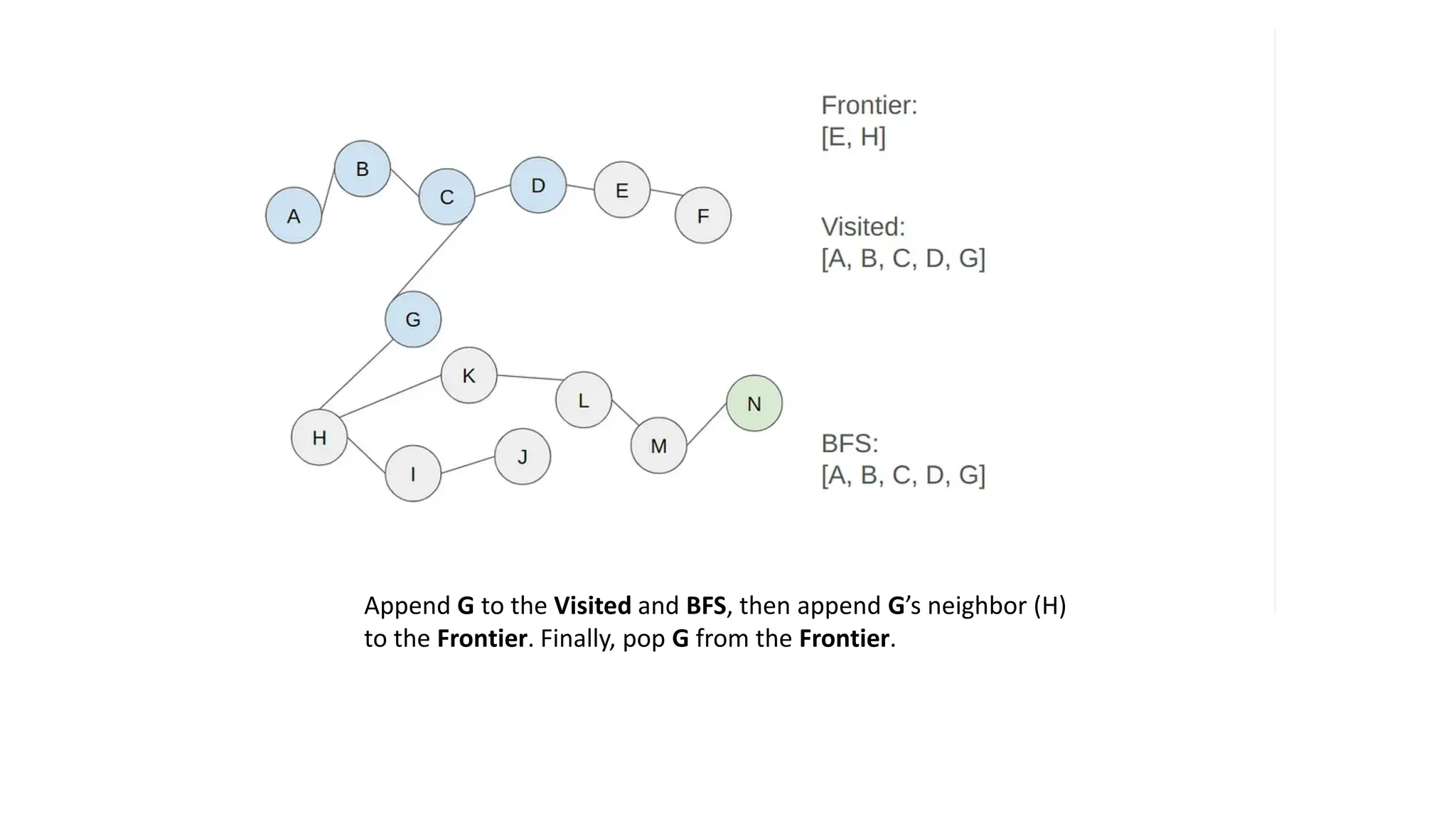
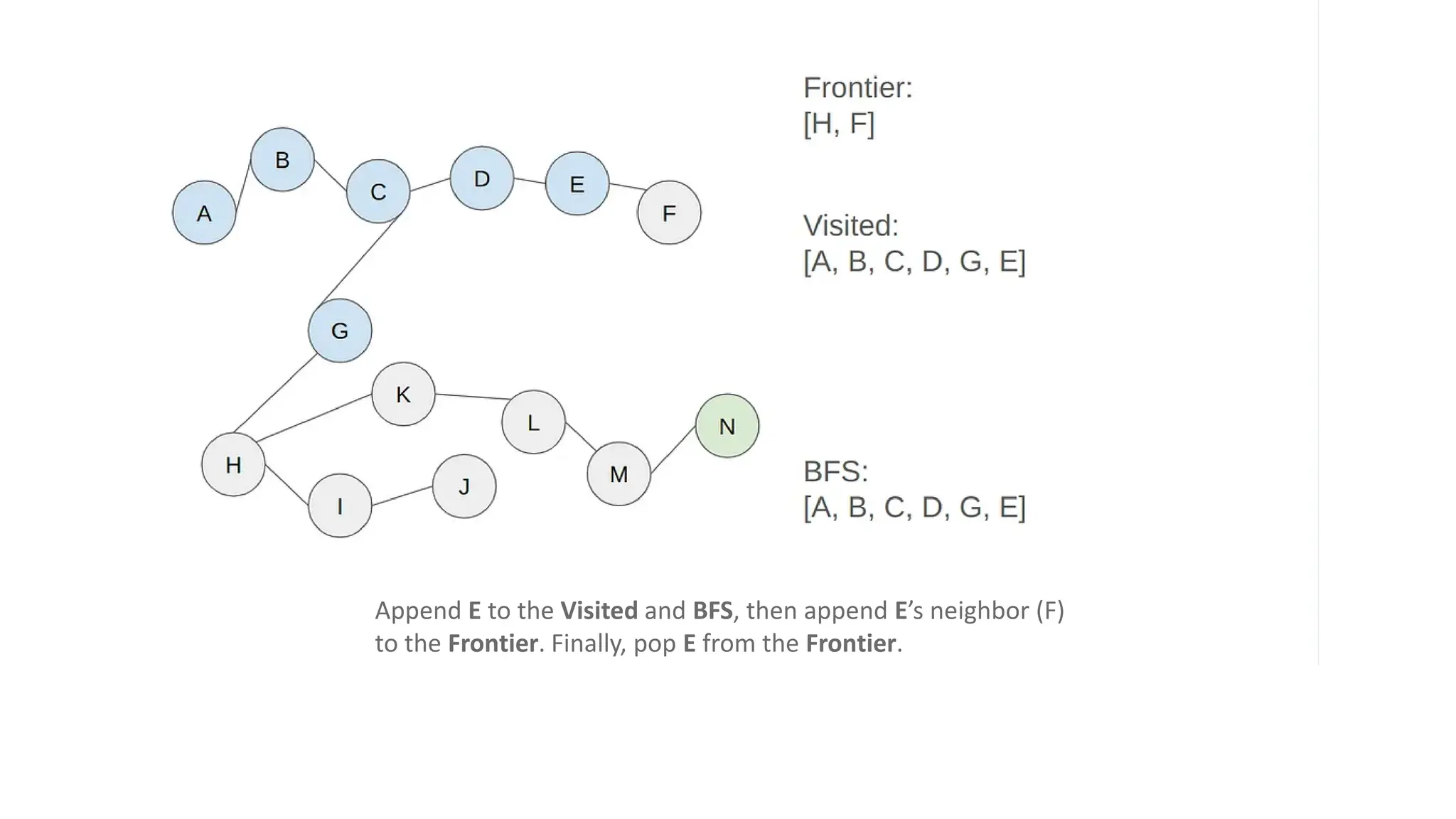
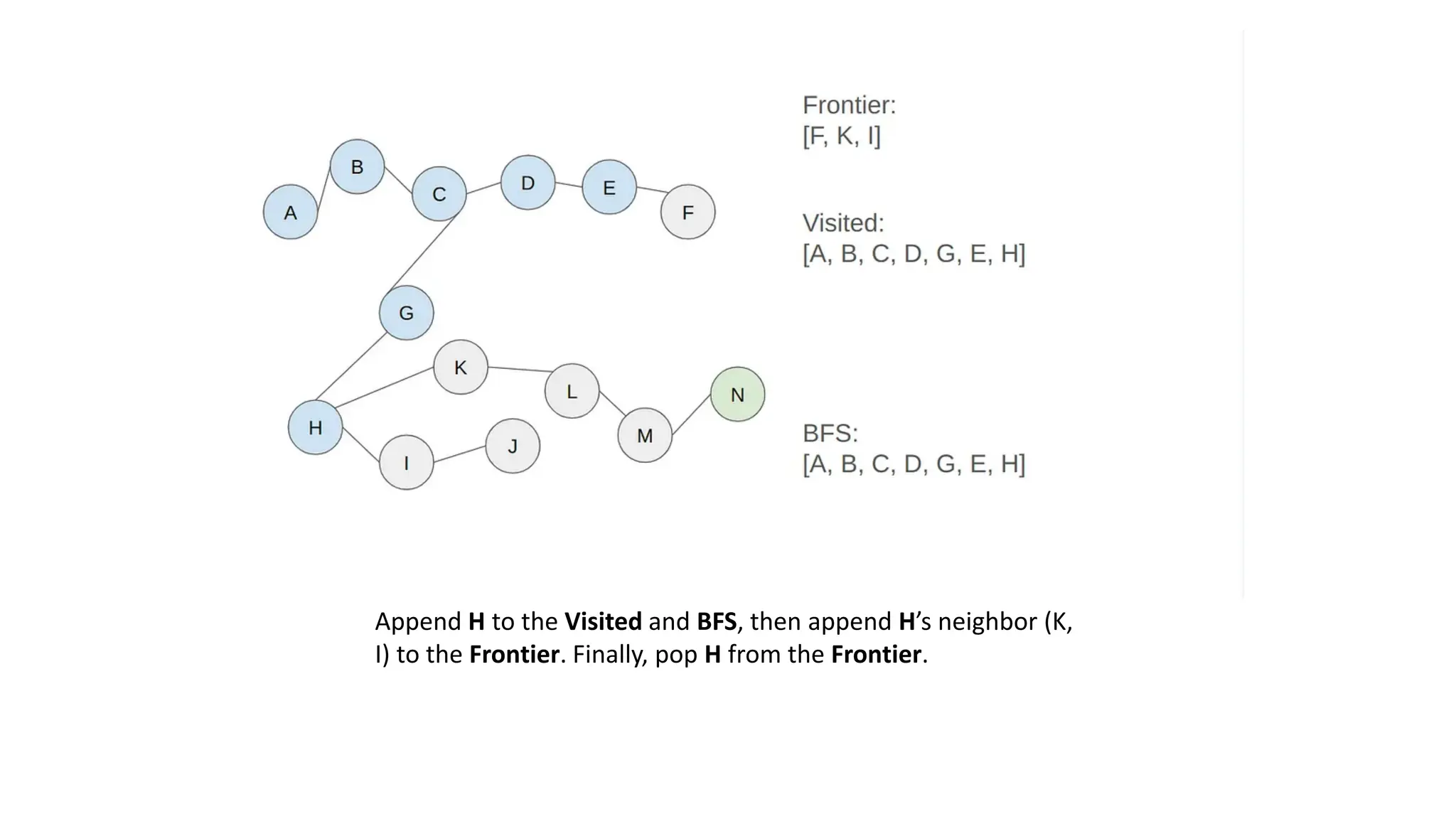
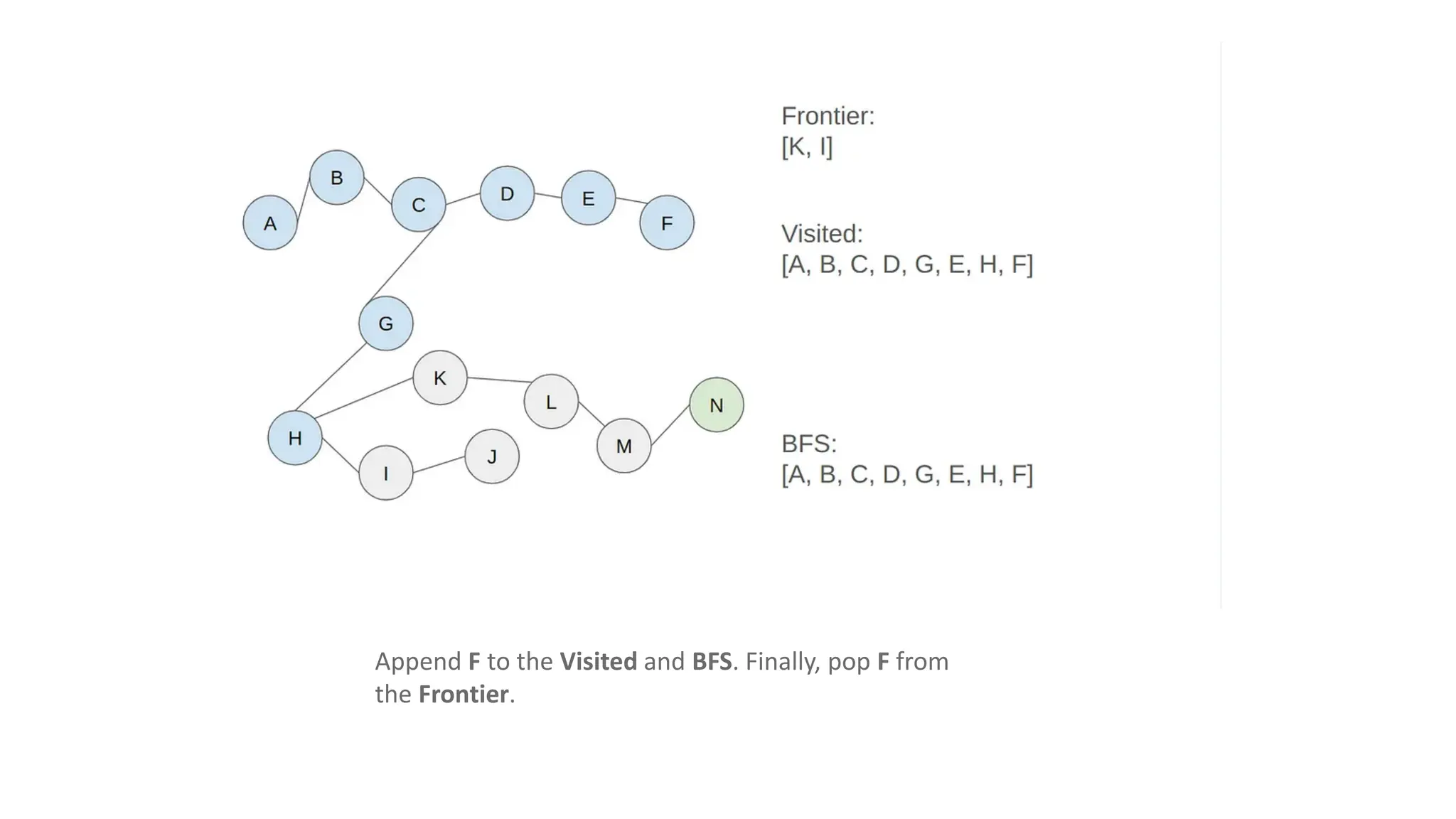
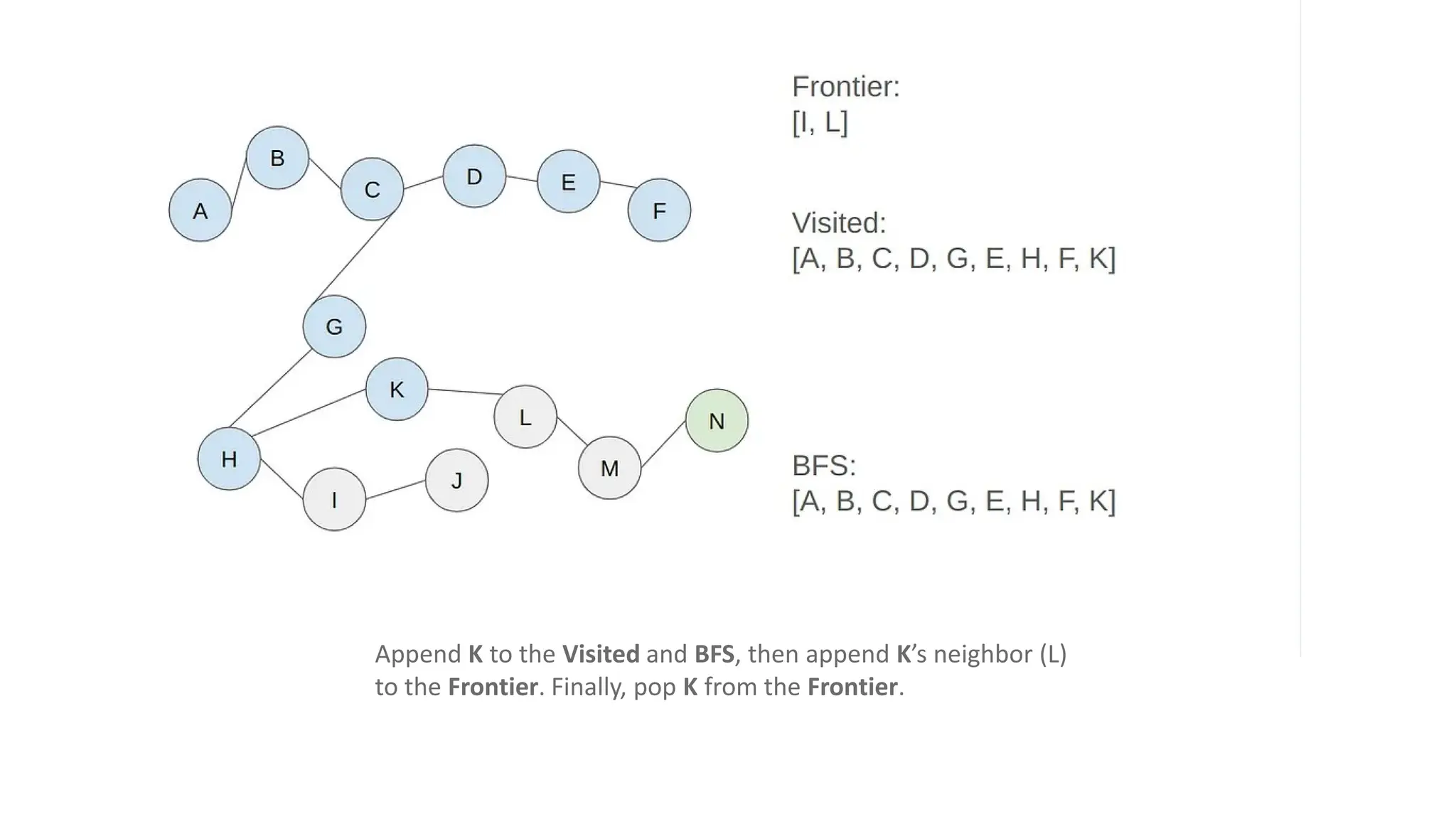
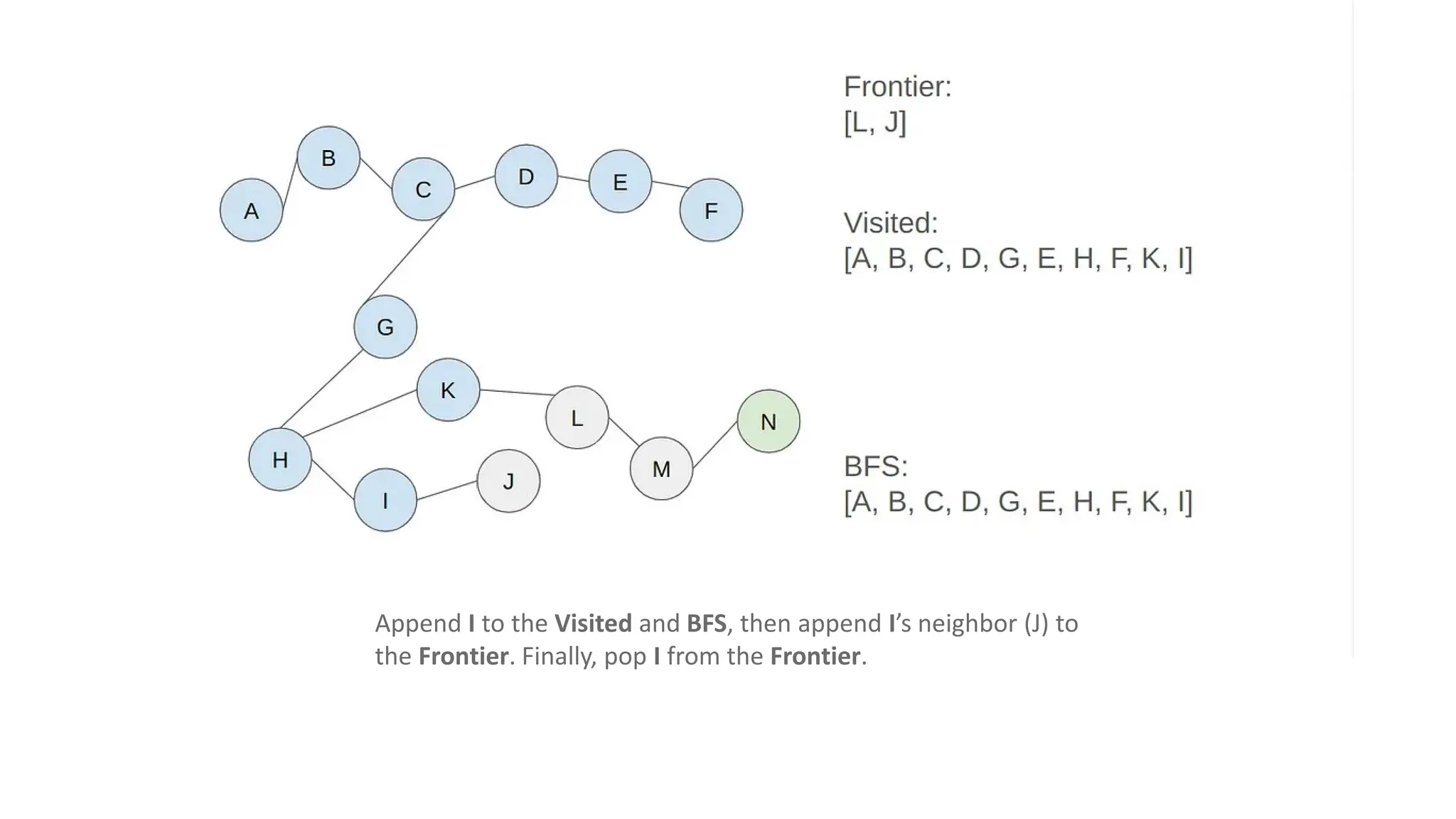
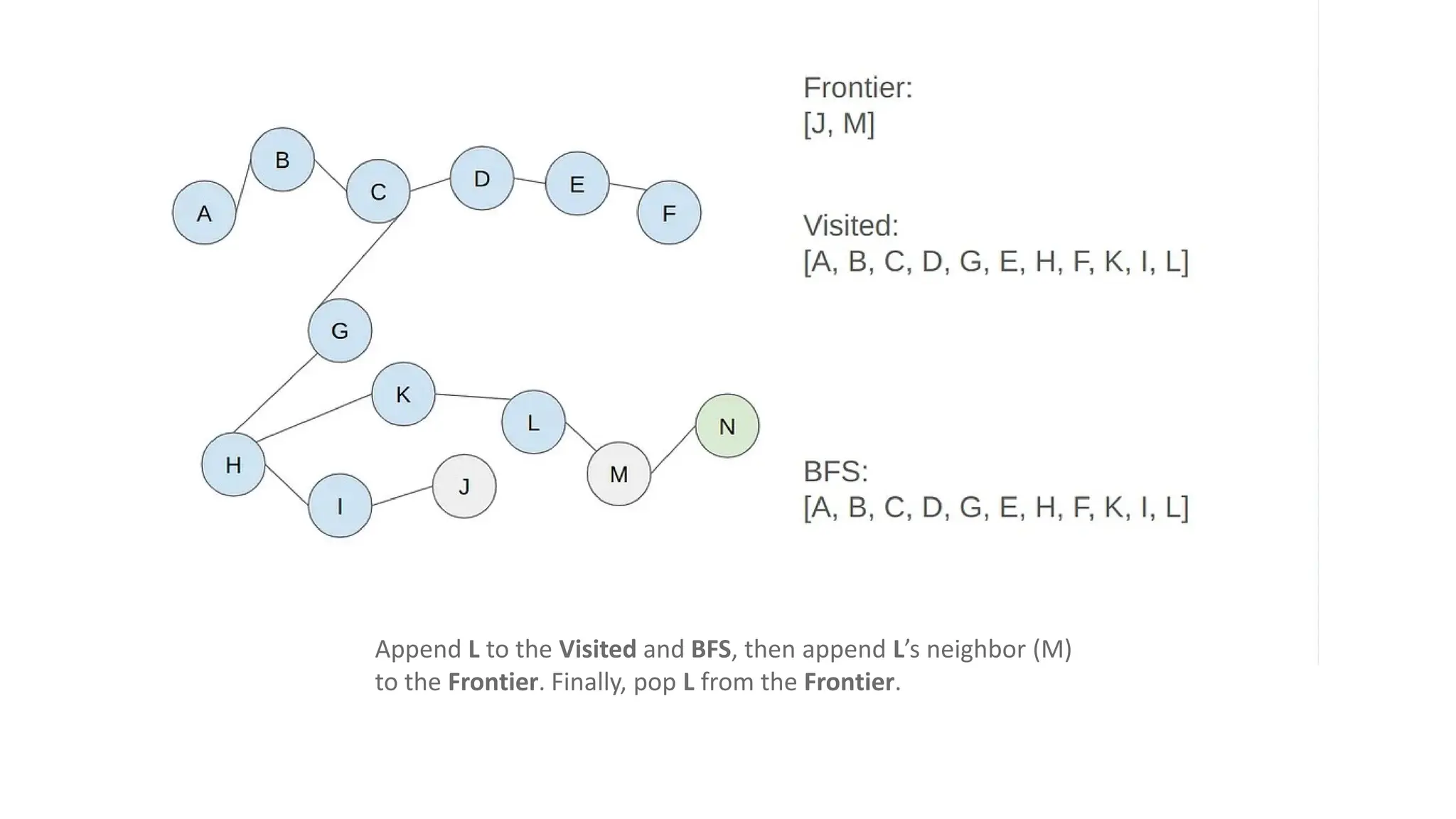
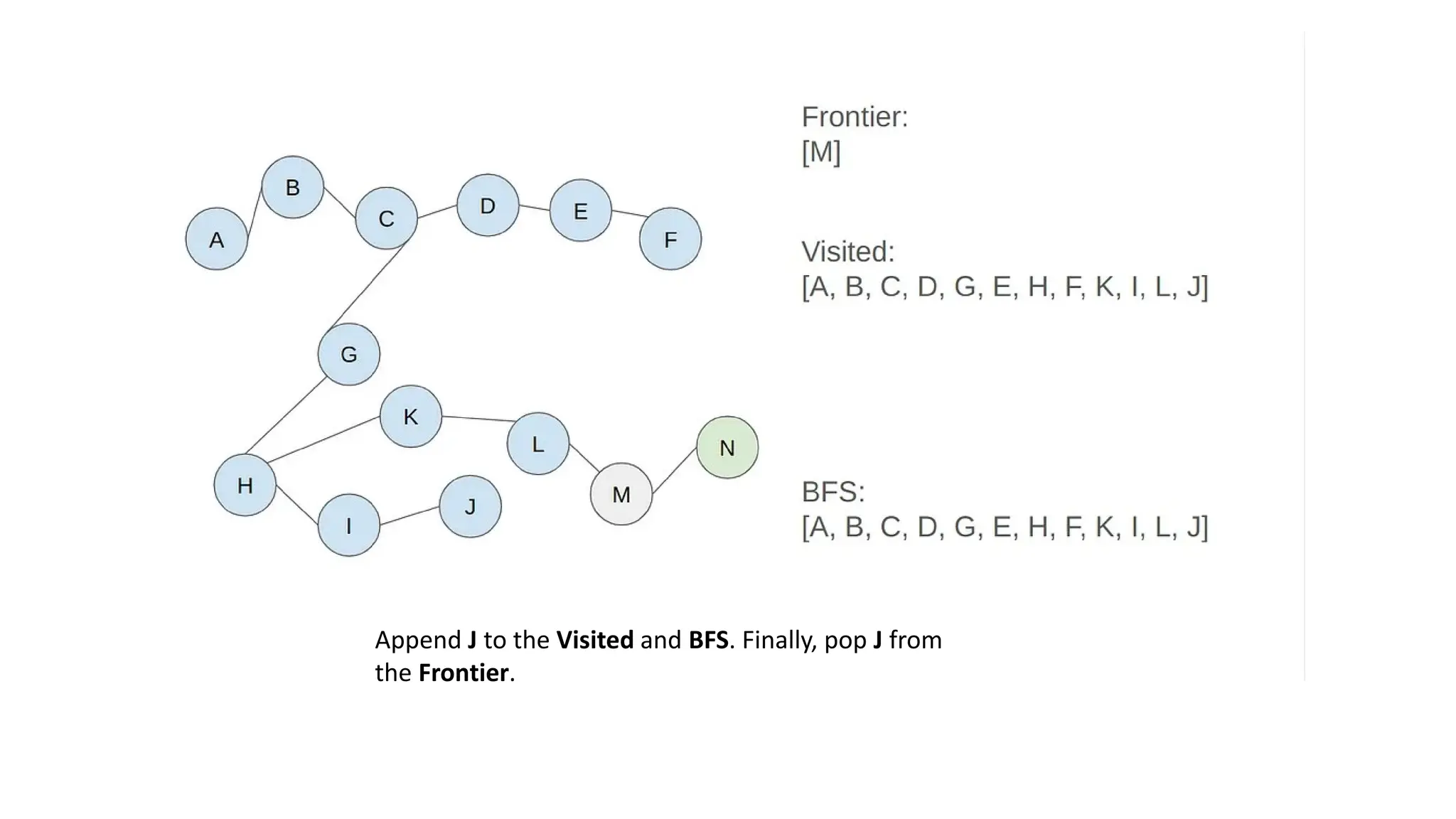
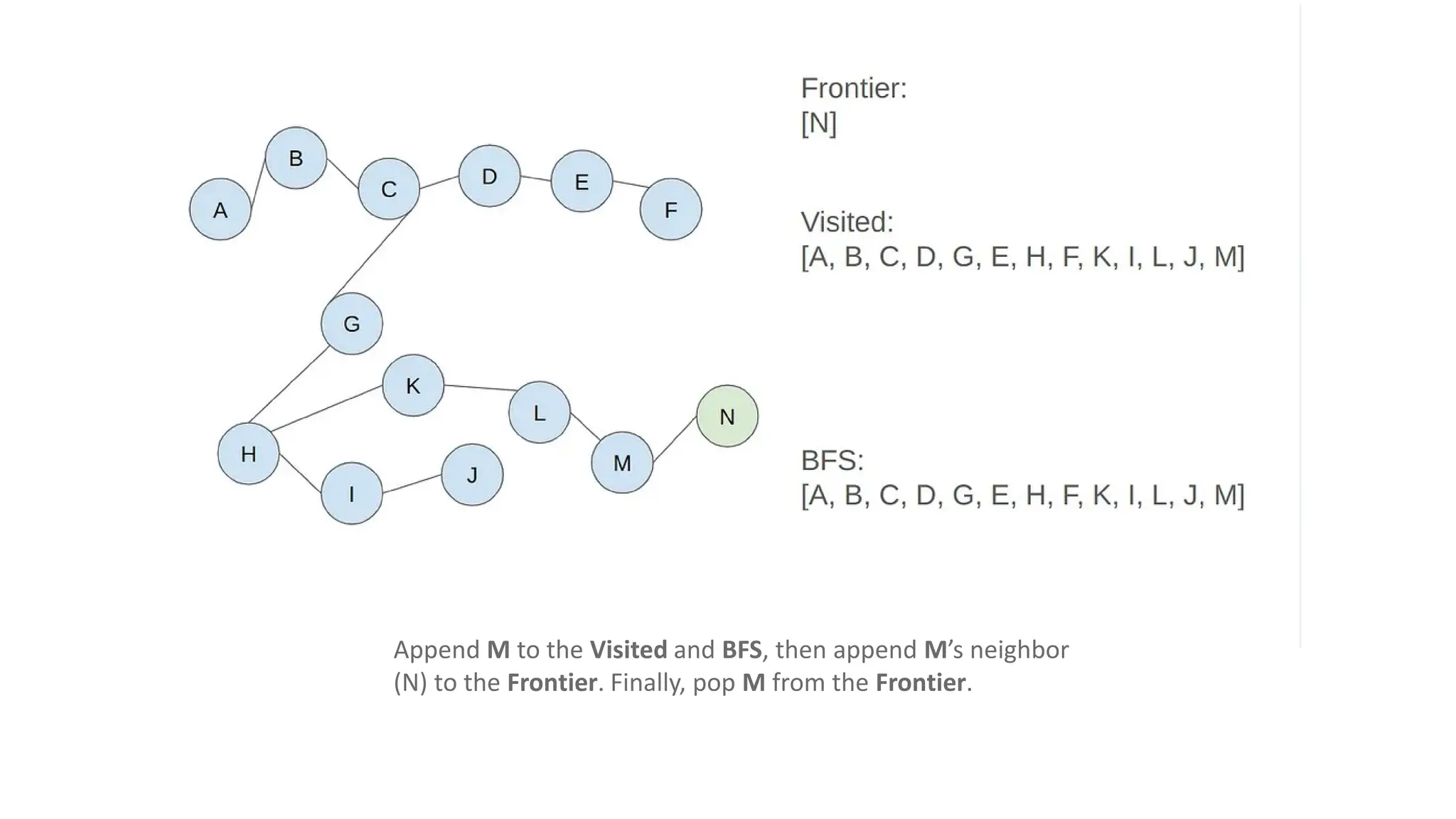

![The answer to the above question will be:
• Solution: [A, B, C, D, G, E, H, F, K, I, L, J, M, N]
• Costs: 13 (there are 13 nodes to step to reach the end node from
the start node)](https://image.slidesharecdn.com/bfsinai-241211064038-59a2344e/75/Breadth-first-search-is-a-graph-traversal-algorithm-25-2048.jpg)
